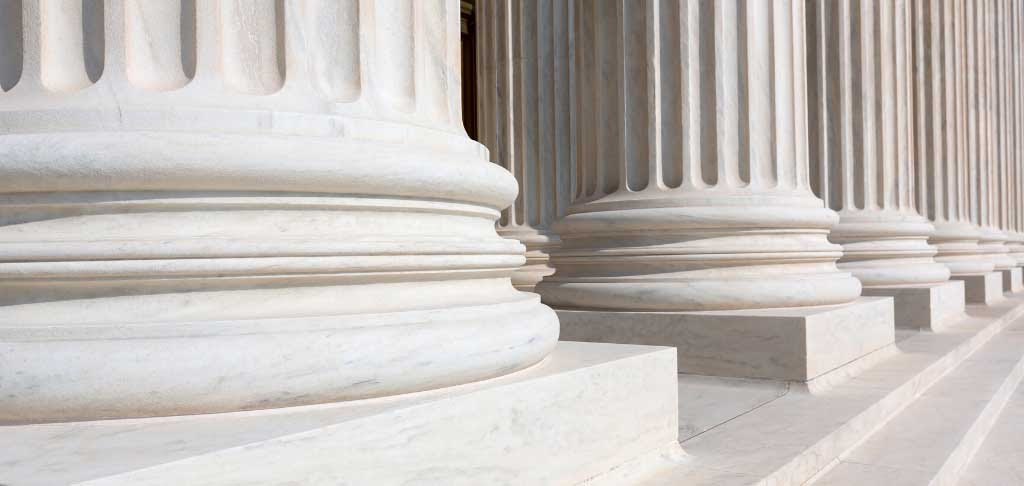

The oldest and newest state supreme courts
Each state has at least one supreme court, but those courts were established at different times. I recently saw an analysis one of our staff members wrote on this topic, and I wanted to share it with you today.
The Massachusetts Supreme Court, founded in 1692, is 329 years old, making it the country’s oldest state supreme court. The Kentucky Supreme Court, founded in 1975, is the country’s youngest at 46 years old. The court was created when voters approved a constitutional amendment that established the state’s current judicial system, which included a state supreme court.
Justices of the Kentucky Supreme Court are elected in nonpartisan elections. If a midterm vacancy occurs, the governor appoints a new justice from a list of three names that the Kentucky Judicial Nominating Commission provides. A Republican governor appointed three judges on the court, a Democratic governor appointed one judge, and three judges were selected in a nonpartisan election. Justices serve eight-year terms, after which they must stand for retention election to remain in office.
In Massachusetts, the governor appoints justices to the Massachusetts Supreme Court. A Republican governor has appointed all seven justices. Justices hold tenured appointments until they reach 70 years old, the age of mandatory retirement.
Fifteen states select state supreme court justices in nonpartisan elections, like in Kentucky. Five states select justices through gubernatorial appointment, like in Massachusetts. Seven states select justices through partisan elections, 21 through assisted appointment, and 2 through legislative elections.
Love reading all about state supreme courts? Find out more about the courts through our two recent exclusive studies on partisanship and dissenters.
Texas voters will decide amendment prohibiting restrictions on religious gatherings and organizations
I recently wrote about the two Pennsylvania ballot measures addressing the governor’s emergency powers. Both measures were approved in the May 18 election. Here’s a summary of another measure that was proposed in response to the coronavirus pandemic and coronavirus-related regulations.
On May 11, the Texas Legislature referred its first constitutional amendment to the November ballot. The amendment would add a section to the state constitution prohibiting the state or any political subdivision from issuing or enacting a statute, order, or rule that prohibits or limits religious services, including religious services conducted in churches.
The amendment was proposed in response to the restrictions put in place requiring religious institutions to refrain from meeting in person in March 2020 due to the coronavirus pandemic. Texas cities and counties issued stay-at-home orders requiring religious gatherings to stream their services. On March 31, 2020, Gov. Greg Abbott (R) issued an executive order that included “religious services conducted in churches, congregations, and houses of worship” in the definition of “essential services.”
As of May 10, Ballotpedia has identified 10 measures appearing on statewide ballots that were proposed in response to the coronavirus pandemic and coronavirus-related regulations.
For the Texas legislature to refer measures to the ballot requires a two-thirds (66.7%) supermajority vote in both chambers. This requirement amounts to 100 votes in the House and 21 votes in the Senate.
The Texas constitution has been amended 507 times since it was adopted in 1876. Voters approved 91% (154 of 169) and rejected 9% (15 of 169) of the proposed amendments between 1995 and 2019.
A look at SCOTUS opinions by month
As the weather heats up, so does the U.S. Supreme Court’s opinion season. The court tends to release the most rulings in June. Before that happens, let’s take a quick look at the number of opinions the court has released each month during the current and previous two terms.
Over the past three terms including this one, no opinions were issued during the month of October. The court’s term begins on the first Monday in October.
In the previous two terms, SCOTUS issued the most rulings in June: 17 in the 2019 term and 30 in the 2018 term.
From November to April, where we have data for all three terms, April has the highest average number of rulings issued, 8.7, and November has the lowest with two.
SCOTUS has issued four opinions so far this May. During the 2019 term, SCOTUS issued four rulings in May. In the 2018 term, the court issued nine rulings in May.
This term, the court accepted 62 cases for argument and has issued 36 opinions to date. Seven cases were decided without argument. Five cases were removed from the argument calendar. Of the cases that were argued this term, 28 are awaiting decisions.

